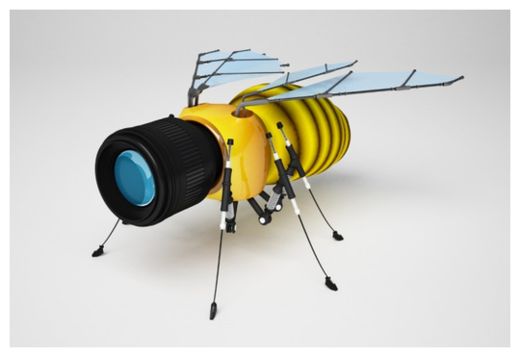
© Andrej Vodolazhskyi / Shutterstock
Robotic scientists, it seems, are hell bent on creating autonomous, animalistic robots.
These machines, should the scientists have their way, would be capable of
running faster than any human being, scaling all manner of
rough terrain, and now, taking flight on their own, thinking like a bee in order to find certain sights and smells.
The robot take over is nigh.
A new report from the Universities of
Sheffield and
Sussex explains how scientists are looking at the way a bee's brain works in order to not only improve
Artificial Intelligence, but to also create the world's first flying robot capable of acting on its own rather than waiting on the instructions of its human creators.
If doctors
James Marshall and
Thomas Nowotny are able to create such a bee-inspired brain, it will be the first time a robotic brain has been built to perform complex tasks similar to those carried out by actual animals and insects.
According to the report, these brains could then be used in search and rescue missions or even performing the jobs of bees (namely pollination) in case the great
bee shortage continues.
Dr. Marshall explained why his team chose the brain of a bee instead of another creature in recent statement: "The development of an artificial brain is one of the greatest challenges in Artificial Intelligence. So far, researchers have typically studied brains such as those of rats, monkeys, and humans, but actually 'simpler' organisms such as social insects have surprisingly advanced cognitive abilities."
This project may sound familiar. Called "Green Brain," this project is partially supported by NVIDIA and attempts to build a brain roughly the size of a bee's. Project "
Blue Brain" is being conducted with help from IBM and aims to recreate the human brain, a much more frightening notion.
Interestingly enough, according to the latest report from the Blue Brain project, the largest simulation they've run so far (as of August) is on the
same scale as, you guessed it, a bee.
According to Dr. Marshall, the bee's brain is the perfect candidate for understanding the way brains work, thus giving us a better opportunity to understand the cognitive systems of a brain and one day fully understand how our brains work.
Interesting, then, that scientists are interested in creating autonomous, flying bees before they fully understand how the human brain works.
"Because the honey bee brain is smaller and more accessible than any vertebrate brain, we hope to eventually be able to produce an accurate and complete model that we can test within a flying robot," said Dr. Marshall.
Dr. Nowotny agrees with his partner, saying the advancements they make with the robotic bee brain will also help improve techniques in other areas of robotics, possibly leading to the creation of other, more horrifying autonomous robots.
The doctors also say understanding the way a bee's brains works will not only allow for the creation of flying, search and destroy robots as well as fully functional robots capable of thinking for themselves, but could also further the understanding of the bee itself, particularly when it comes to pollination.
It is unfortunate that the Pandora's Box that is modern technology has been opened but it may be a wiser course to embrace it rather than fight it.
With understanding and patience, perhaps we can avoid an 'I, Robot' or 'A.I.' type of situation.
The day will come when the "uncanny valley" is crossed and that day may be cursed by posterity or praised by it. Only time will tell.